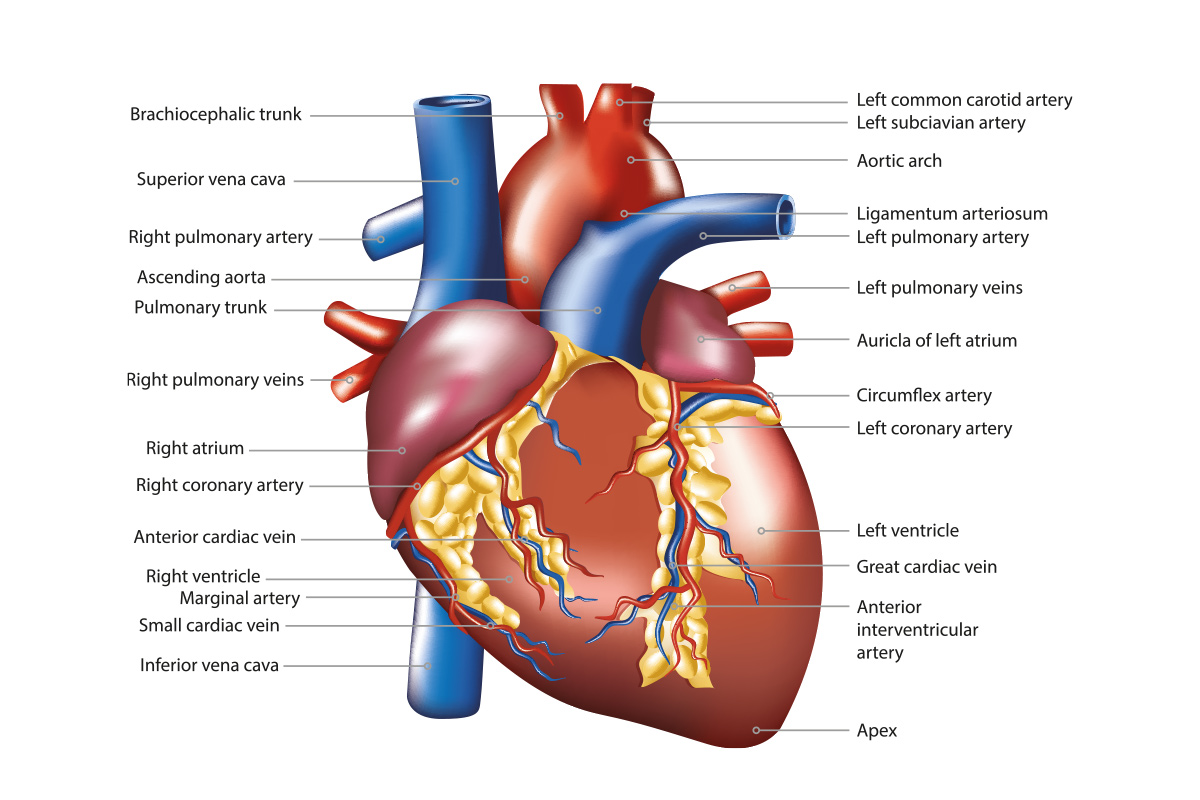General Anatomy
The heart is located behind the anterior chest wall, midway between the two lungs. It is composed of muscular tissue. It is a vital organ whose main function is to pump blood.
Front view of the heart
Front view of the heart; After removal of the anterior parts: the left ventricle, the right ventricle and the right atrium:
It consists of four chambers, an atrium and a ventricle on the right and left sides. The tricuspid valve separates the right atrium and the right ventricle, and the mitral valve separates the left atrium and the left ventricle. The aortic valve is located between the end of the left ventricle and the beginning of the aorta, the largest artery of the human heart. Similarly, the pulmonary valve is located between the right ventricle and the pulmonary artery. The veins (inferior vena cava and superior vena cava), which bring blood from the whole body, are connected to the right system of the heart. This blood leaves the right system through the pulmonary artery. Blood returning from the lungs through the pulmonary veins circulates to the left atrium and left ventricle and is pumped throughout the body through the aorta.
The outer surface of the heart is surrounded by a membrane called the pericardium. Between this membrane and the heart is a very small amount of lubricating fluid to allow the heart to move freely during its function.

